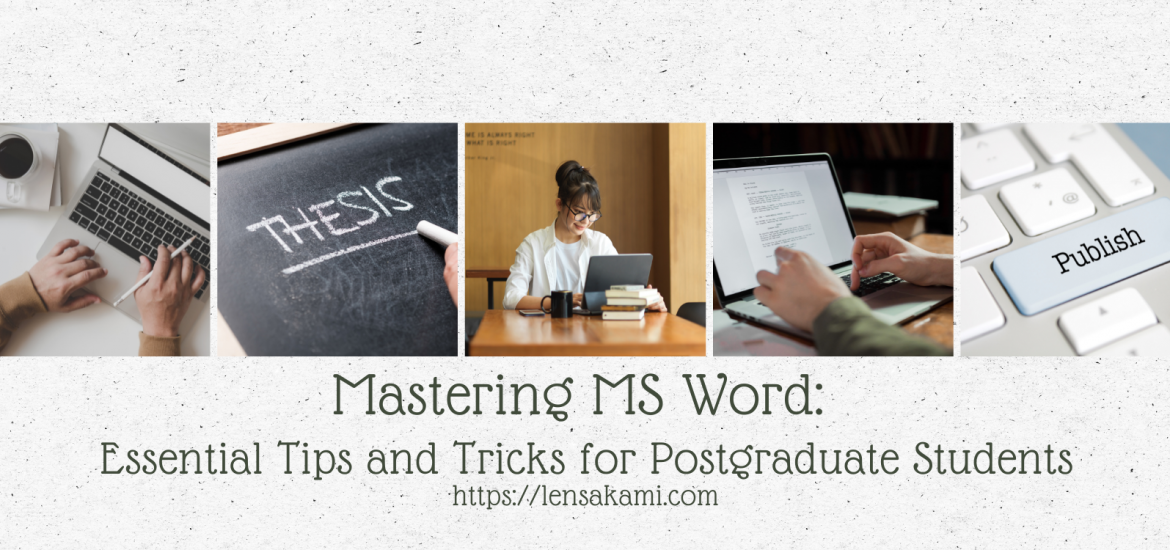Are you a postgraduate student looking to streamline your academic work and enhance your document creation skills? In this blog post, we’ll explore a range of MS Word tips and tricks specifically tailored to the needs of postgraduate students.
1. Styles and Formatting Mastery:
Efficiently formatting your documents is crucial for academic writing. Learn to leverage MS Word’s built-in styles to maintain consistent formatting throughout your thesis, research papers, and assignments. Customize styles according to your university’s guidelines for headings, subheadings, citations, and more.

2. Table of Contents (ToC) Creation:
Creating a table of contents manually can be time-consuming and prone to errors. Utilize Word’s automatic Table of Contents feature. Assign styles to your headings and let Word generate a flawless and clickable ToC, saving you both time and effort.

3. Citations and Bibliography:
Postgraduate work often involves citing numerous sources. MS Word’s References tab offers tools like the “Citations & Bibliography” feature, which can help you manage and format your citations and bibliographies according to various citation styles (APA, MLA, Chicago, etc.). You can also import add-in setting for your reference manager such as EndNote & Mendeley.

4. Collaboration Made Easy:
Collaborating with fellow students or professors on a document? Take advantage of Word’s real-time collaboration features. Share your document through OneDrive or, Google Drive, Dropbox, SharePoint, and multiple users can work on the same document simultaneously, making edits and leaving comments.
5. Track Changes and Comments:
When receiving feedback on drafts, use Word’s “Track Changes” feature to keep a record of edits. The “Comments” feature also allows you to provide or receive feedback in context without altering the original content.

6. Equation and Symbol Tools:
For scientific or technical writing, equations and symbols are often necessary. MS Word’s equation editor can help you create complex mathematical equations, while the “Symbol” feature enables you to insert special characters and symbols seamlessly.

7. Quick Parts and AutoText:
Save time by creating reusable content snippets using the “Quick Parts” or “AutoText” feature. This is particularly useful for inserting commonly used phrases, headings, or signatures with just a few clicks.
8. Navigation Pane:
Navigating through lengthy documents is simplified with the Navigation Pane. You can quickly jump to specific sections, headings, or even search for keywords within your document.
9. Custom Keyboard Shortcuts:
Boost your efficiency by customizing keyboard shortcuts for frequently used actions. Go to “File” > “Options” > “Customize Ribbon” to assign shortcuts that align with your workflow.
10. Read Aloud Feature:
Proofreading your work is crucial, and the “Read Aloud” feature in Word can assist by reading your text aloud, helping you catch errors that your eyes might miss.
Mastering Microsoft Word is an essential skill for postgraduate students aiming to excel in their academic pursuits. These tips and tricks streamline your document creation process, enhance collaboration, and make your academic journey smoother. By harnessing the power of MS Word, you’ll be better equipped to focus on your research and studies, while producing documents of the highest quality.



